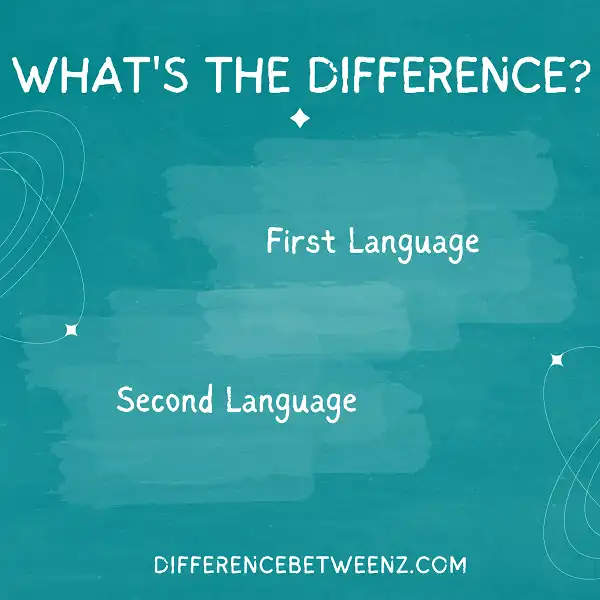What is the difference between a first language and a second language? It’s a question that has been asked many times but seldom answered satisfactorily. Many people feel confident when speaking their native tongue but hesitate to use another language in everyday interactions. Some even perceive second languages as being too hard to learn and become frustrated trying to do so.
Yet, in today’s increasingly globalized world, it’s important for everyone to have at least some understanding of other languages – be it professionally or socially. To truly comprehend the difference between first language and second language, however, one must explore what each actually entails from learning methodology to formality levels associated with different contexts. Hopefully, this post will shed light on the complex nature of these dual concepts and give readers insight into why mastering both can be beneficial!
What is First Language?
First Language, also known as a mother tongue or native language, is the language a person learns from birth. First Language acquisition is an extremely important part of cognitive and social development; exposure to a first language helps children learn how to think and reason by providing them with the ability to put concepts into words.
First Language also serves as a link between cultural communities, helping people understand and appreciate spiritual, behavioral, and expressive heritage associated with their culture. First Languages are very diverse and range from indigenous languages to widely used ones such as English and Spanish. First Language proficiency helps in many aspects of life ranging from academic success to career paths and more.
What is Second Language?
A second language is any language learned in addition to one’s native language, usually with the purpose of either using it for communication or in order to obtain a better understanding of a different culture. Second languages can be beneficial as they open up new opportunities and improve an individual’s job prospects. Second languages can even be used to improve cognitive skills, such as problem-solving and memory. Second language learning also has social benefits, as it allows an individual to understand and appreciate other cultural norms while potentially opening the door to new friendships. Therefore, Second Languages are indeed very important and can prove to be invaluable when pursuing global opportunities.
Difference between First Language and Second Language
First language and second language are terms which refer to language learning in an individual’s life.
- First language, or L1, refers to the native language of a person acquired as part of their upbringing or before they learn formal education.
- It is also known as the mother tongue since it is often the language that the mother speaks.
- On the other hand, a second language (L2) is any non-native language that an individual learns after birth.
- This differs from a foreign language which describes any non-native language learnt outside of regular schooling and outside of any fluency requirements.
While most people in today’s world are multilingual, first and second languages remain critical elements for communication, education, family bonds, and cultural identity.
Conclusion
The difference between first language and second language is that first language acquisition refers to the process by which infants learn their native tongue, while second language acquisition occurs when an individual attempts to learn a new language later on in life. There are many theories about how people go about learning languages, but one things for sure- it’s never too late to start!


